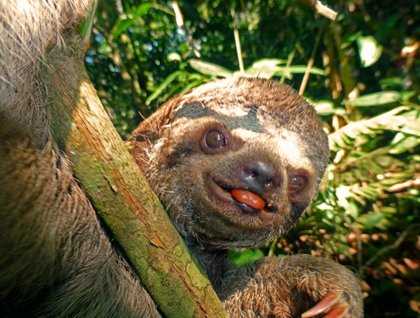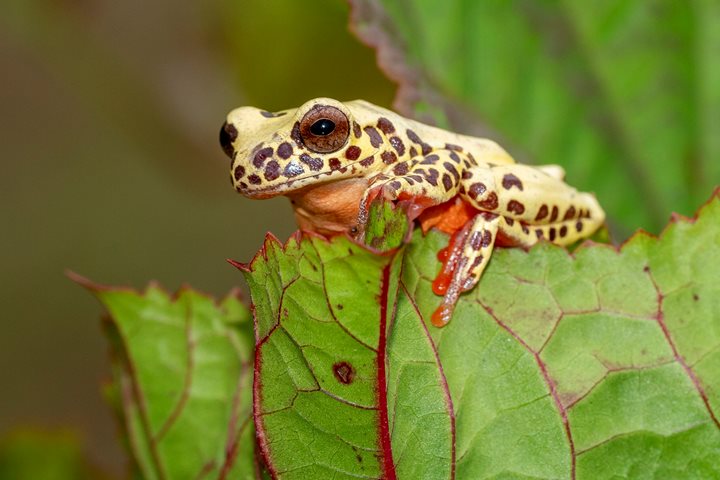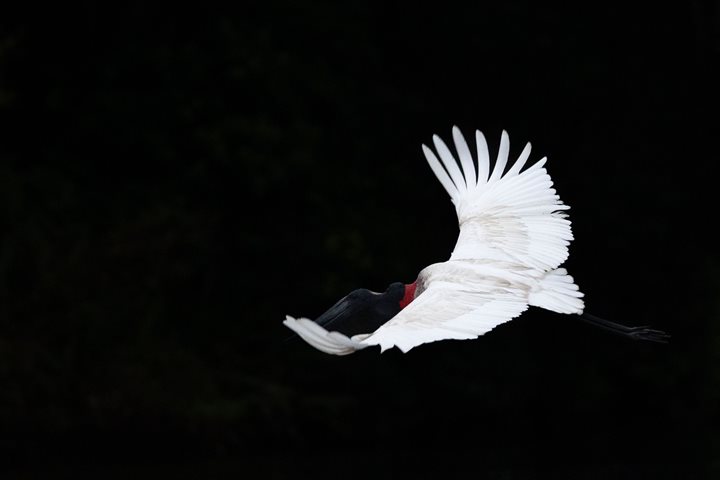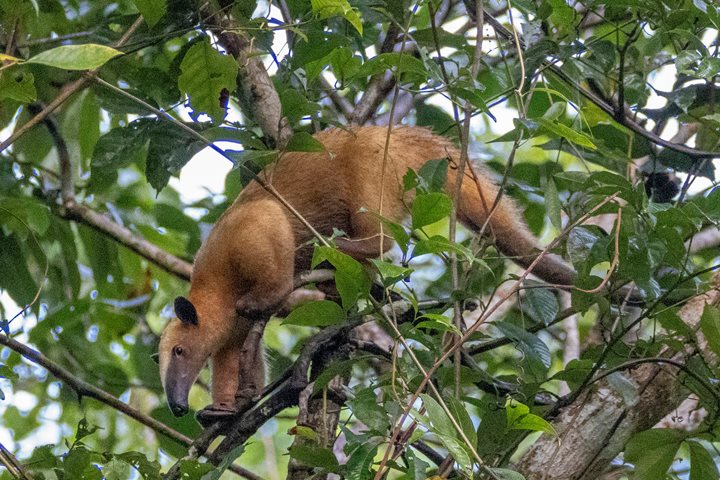Our first day on the Upper Amazon began with a lovely sunrise. The sun began to reveal the lush green color of the forest. The different birds called could easily be heard, giving great evidence of the biodiversity that has been kept pristine due to its remote location.
We disembark the Delfin II and loaded the skiffs. We approached the entrance of a trail, next to a village called Casual. We split in groups and started our first day of exploration. We were so excited to learn about the wonders of the Amazon’s forest.
Two local guides of the community joined our naturalist in the walks. Knowing the trails like the palm of their hands, they began to find the wildlife that is hidden in this place. It was a great moment for learning and discovering the mysteries of the forest. The animals didn’t wait very long to show up.
From tiny dart frogs to big reptiles, all delighted our explorers. Step by step, our naturalist explained several medicine plants and the several movements done by the locals in preserving the area. They also shared with us the threat the forest is going through since there are a lot of oiling and mining companies interested in the Amazonian Forest.
This morning hike was rewarded with interesting wildlife. A small three toed sloth was spotted and his tender look couldn’t avoid the cameras of the explorers. Reptiles, like red tailed boa and green anaconda, were also the subjects of many our photographers. Several species of exotic birds were also captured in those cameras.
Back on board Delfin II, we cruised towards the Yanayacu and Pucate River. At our arrival to this place we were greeted by a mixed pod of pink dolphins and gray dolphins. As much as we tried, it was also impossible to frame those dolphins. They would show up one direction and the cameras were all pointing the opposite direction. So the best we could do was to take a picture with our memory.
On board the skiffs, we explored the Pucate River. Some pink dolphins showed up close to the skiff but it was hard to predict where they would come out the surface for us to take the pictures. The river is considered a black water river. This is because the amount of sediment that is found at the bottom of the river bed. Lots of dry leaves falls in the water and begin to decompose which gives the river water its color.
We had an amazing time exploring this tributary. We were escorted by a massive diversity of birds – what can I tell you? Our first day in the Upper Amazon was just breathtaking!







